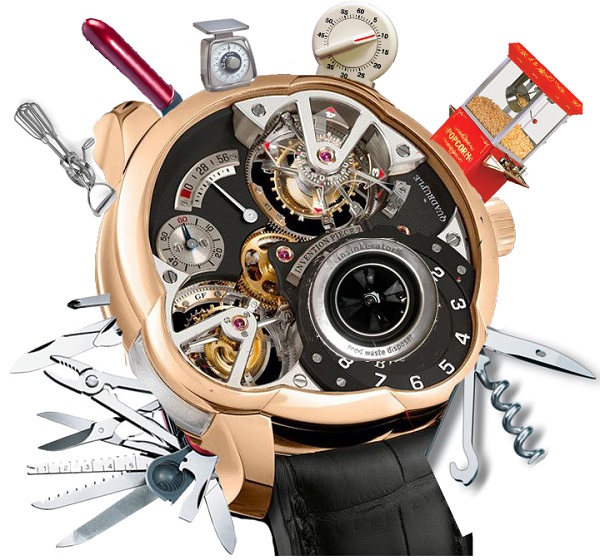
It seems these days, that in order to get truly noticed in this crowded watch market, the watch companies have taken the complication pact to “boldly go where no one has gone before.”
It seems that the one-upmanship of each new watch release keeps breaking the sound barrier of mechanical “complications”: coaxial; tourbillion; moon phase; fly backs; geographic world time; minute repeater; perpetual calendars; split second chronograph; jumping hours; spitting frogs; dancing Bears; Topo Gigio. I’m ready to throw in the towel and wave the white flag… I’m finally finding these complications to be unreadable, overkill, distracting, and above all, really get in the way of what a watch is supposed to do…tell you the time.
Of course, I must take off my hat and bow down to the gods of mechanical watch design who had the vision and conceptual ability to dream these mechanical wonders up, and actually bring them to reality in a finished product. But, enough is enough already.

In order to understand how we came to this point in horological history, we must first start at the beginning, to the very first complications.
If we could take a time machine back to the 1500 and 1600’s, when timekeeping was moving towards “personal timekeepers”, rather than public formats: Church bells; ship bells; sundials; and guys yelling: “10 o’clock and all is well”…to the individual timekeeping apparatus: the pocket watch.
The very first pocket watches, made in 16th century Europe, were transitional sized instruments that were a form of a miniature, or downsized, clock. Since clocks at this time were heavy, with weights providing the energy source, it took the mechanical genius of a German locksmith, Peter Henlein, in 1510, to design the complication of a spring driven source, which allowed and evolved into the miniaturization of the energy source…today known as the mainspring. As time marched on, the watchmakers (clock makers) of the time, kept refining their skill so that they were able to produce a timepiece that could actually be worn on the body, either on a chain around the neck, or fastened to the clothing: “16th Century Bling”. This device had an amazing mechanical complication: an “hour hand”. What an extraordinary device, this little apparatus could give you the time just by looking at the round dial with numbers and knowing that if the hour hand is between 3 and 4, it’s about 3:30!! You wouldn’t need to be dependent on bells or guys yelling out the time anymore…. you controlled your own time destiny. The only drawback from today’s standards was that the watch was accurate to only within 10 to 30 minutes per day. So in retrospect, a minute hand would have been pointless.
